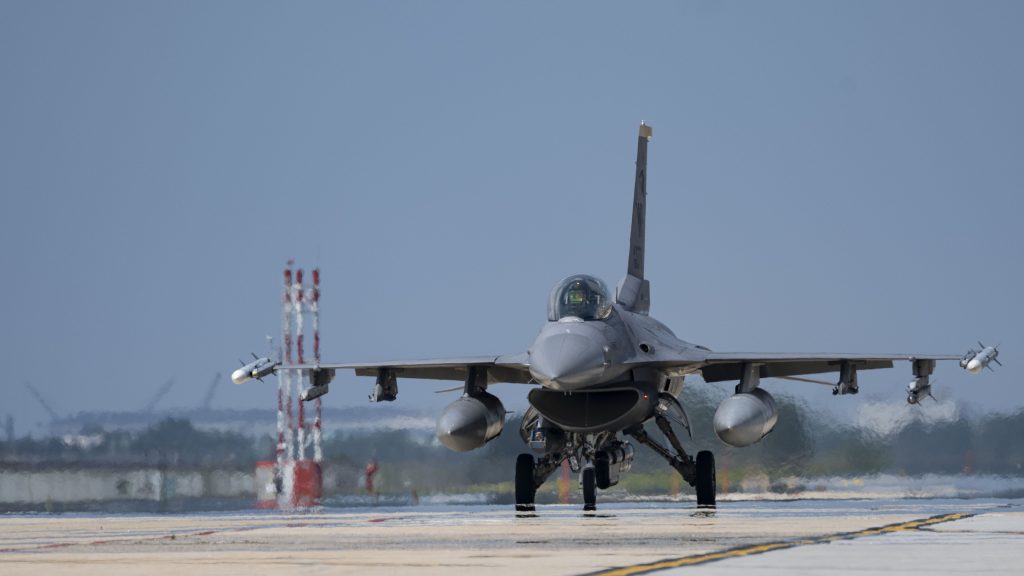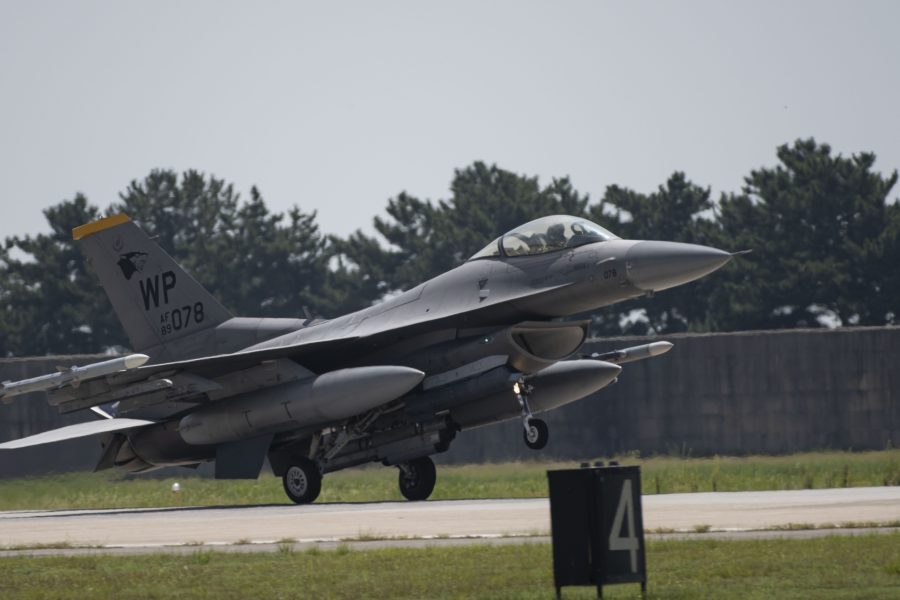U.S. and South Korean fighters are flying sorties at a breakneck pace this week in their Ulchi Freedom Shield exercise meant to prepare for potential missile attacks by North Korea.
Over 200 aircraft, including F-16s and A-10s from the 8th Fighter Wing and 51st Fighter Wing and F-15K, FA-50, and KF-16 jets from the Republic of Korea Air Force, are conducting 2,000 sorties together from Aug. 19 to Aug. 23, according to the ROKAF.
In a release, the South Koreans said flight operations would continue nonstop for five consecutive days, generating the “largest” number of sorties in a joint U.S.-ROK exercise. It will also mark the first time multiple squadrons from both countries are engaging in nonstop operations.
“Conducting exercises of this scale and nature is a necessary part of our readiness posture here in the Republic of Korea,” U.S. Air Force Col. William McKibban, 51st Fighter Wing commander, said in a release.

The 51st Fighter Wing release noted that the U.S. fighters will carry out local flights and combat drills to improve teamwork with the ROK Air Force in “realistic combat scenarios,” designed to counter weapons of mass destruction.
“We must continue to improve, innovate and optimize our processes to generate lethal combat power,” Col. Peter Kasarskis, 8th Fighter Wing commander, said in a statement. “Our participation in these exercises builds a more combat-ready force, better able to meet any challenge in the Indo-Pacific region.”
Both USAF units are assessing their readiness by deploying the fighters to a partner base on the peninsula, to quickly adapt and perform in a new environment. Such drills demonstrate that the wing is “ready to fight tonight when needed, from the tactical level all the way up to the operational,” added McKibban.
Both the scale of the exercise and the focus on Agile Combat Employment mirror the U.S. Air Force’s growing emphasis on large-scale exercises in the Indo-Pacific.
As a whole, Ulchi Freedom Shield which spans 11 days across land, air, and sea. This year’s iteration features over 19,000 troops from the two allies and various United Nations Command member states. The training will include rehearsal scenarios aimed for potential attacks from Pyongyang.
“Exercise USF will reflect realistic threats across all domains, such as the DPRK’s missile threats,” Ryan Donald, spokesperson for the U.S. Forces Korea said in a press conference. “We’ll take lessons learned from recent armed conflicts. This is all designed, so we don’t have a failure of imagination.”
The South Korean Defense Ministry has also stated that the exercise will include “responses to North Korean nuclear threats.”
Just hours before the training kicked off on Aug. 19, North Korea’s Foreign Ministry labeled it as “the most aggressive and provocative invasion rehearsal in the world” in its state-run newspaper. The Pentagon has dismissed the claim.
“These exercises are defensive in nature,” Pentagon Press Secretary Air Force Maj. Gen. Patick Ryder said on Aug 20. “They’re also longstanding, and these are opportunities for our forces to work together on interoperability and to learn how to operate in dissimilar environments.”
Additionally, the U.S. military will support “the ROK government’s wartime preparation for defensive operations, offensive operations, stability operations and defense support to civil authorities,” Donald said.
During the exercise, the two nations will conduct live-fire exercises and comprehensive field drills to enhance interoperability. The exercise will also incorporate space-related elements, such as “GPS jamming and cyber attacks,” according to Donald.
Last year’s iteration saw a B-1 bomber joined by both nations’ fighters for training before the exercise concluded, but whether any U.S. strategic assets will be featured in this year’s edition remains murky.
“With regards to strategic assets, it’s premature (to discuss), and also a violation of policy to disclose that information at this time,” said Donald.
